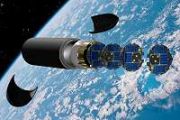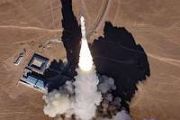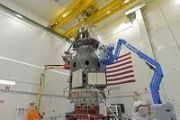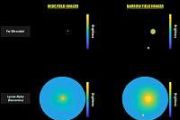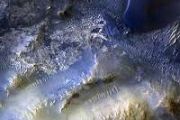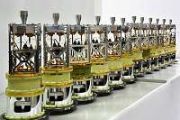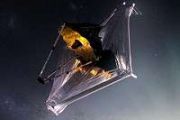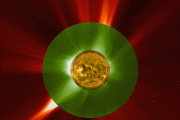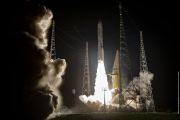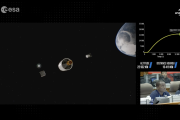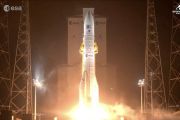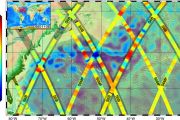
Copernical Team
Aerojet Rocketdyne to provide propulsion for three additional Orion spacecraft
 Aerojet Rocketdyne recently received a $67 million contract award from Lockheed Martin to provide propulsion systems for the Orion spacecraft that are planned to launch on Artemis missions VI-V3. This new work is an extension of the 2019 Orion Production and Operations Contract (OPOC). The Orion spacecraft recently completed a successful test flight during NASA's Artemis I mission, proving it is
Aerojet Rocketdyne recently received a $67 million contract award from Lockheed Martin to provide propulsion systems for the Orion spacecraft that are planned to launch on Artemis missions VI-V3. This new work is an extension of the 2019 Orion Production and Operations Contract (OPOC). The Orion spacecraft recently completed a successful test flight during NASA's Artemis I mission, proving it is Viasat confirms ViaSat-3 Americas set to launch
 Viasat Inc. (NASDAQ: VSAT), a global communications company, has confirmed the scheduled launch date for the ViaSat-3 Americas satellite is April 18, 2023 during an approximately one-hour long launch window opening at 7:29pm EDT. The ViaSat-3 satellite will launch aboard a SpaceX Falcon Heavy from Launch Complex 39A (LC-39A) at NASA's Kennedy Space Center in Florida.
The satellite will be
Viasat Inc. (NASDAQ: VSAT), a global communications company, has confirmed the scheduled launch date for the ViaSat-3 Americas satellite is April 18, 2023 during an approximately one-hour long launch window opening at 7:29pm EDT. The ViaSat-3 satellite will launch aboard a SpaceX Falcon Heavy from Launch Complex 39A (LC-39A) at NASA's Kennedy Space Center in Florida.
The satellite will be Transforming nature conservation with the power of satellite imagery
 Satellite imagery is changing conservation as we know it. By being able to take an inventory of the Earth's surface and observe changes, we can begin to understand ecosystem dynamics in an unprecedented level of detail. Satellite imagery is already supplementing traditional conservation research methods, and in some cases is even replacing them. High-quality satellite images can be used to rapid
Satellite imagery is changing conservation as we know it. By being able to take an inventory of the Earth's surface and observe changes, we can begin to understand ecosystem dynamics in an unprecedented level of detail. Satellite imagery is already supplementing traditional conservation research methods, and in some cases is even replacing them. High-quality satellite images can be used to rapid Tracking changes to water, ecosystems, land surface
 Merging data from multiple satellites, OPERA can help government agencies, disaster responders, and the public access data about natural and human impacts to the land.
Where are flood waters flowing after major storms? Where are the changes in tree and plant cover after droughts, wildfires, deforestation, or mining? How much did the land move during an earthquake or volcanic eruption? Scie
Merging data from multiple satellites, OPERA can help government agencies, disaster responders, and the public access data about natural and human impacts to the land.
Where are flood waters flowing after major storms? Where are the changes in tree and plant cover after droughts, wildfires, deforestation, or mining? How much did the land move during an earthquake or volcanic eruption? Scie Teasing strange matter from the ordinary
 In a unique analysis of experimental data, nuclear physicists have made the first-ever observations of how lambda particles, so-called "strange matter," are produced by a specific process called semi-inclusive deep inelastic scattering (SIDIS). What's more, these data hint that the building blocks of protons, quarks and gluons, are capable of marching through the atomic nucleus in pairs called d
In a unique analysis of experimental data, nuclear physicists have made the first-ever observations of how lambda particles, so-called "strange matter," are produced by a specific process called semi-inclusive deep inelastic scattering (SIDIS). What's more, these data hint that the building blocks of protons, quarks and gluons, are capable of marching through the atomic nucleus in pairs called d Mars reveals liquid core as scientists measure first seismic waves
 Scientists have confirmed that Mars' core is liquid as seismic wave measurements have given valuable first-time clues about how the Red Planet was formed.
The findings, published in the Proceedings of the National Academy of Sciences, show Mars' core is a completely liquid iron-alloy core with high percentages of sulfur and oxygen, unlike Earth's core, which is a combination of a liquid
Scientists have confirmed that Mars' core is liquid as seismic wave measurements have given valuable first-time clues about how the Red Planet was formed.
The findings, published in the Proceedings of the National Academy of Sciences, show Mars' core is a completely liquid iron-alloy core with high percentages of sulfur and oxygen, unlike Earth's core, which is a combination of a liquid Fleet Space Technologies secures Australian defence space command contract
 Fleet Space Technologies, an Australian space technology company, has signed a AUD$6.4 million contract with Australia's Defence Space Command. The agreement marks the company's first foray into the defence sector and will see Fleet's next-generation Centauri satellites used to develop and demonstrate a Low Earth Orbit (LEO) satellite communications system.
The program, named ASCEND2LEO, w
Fleet Space Technologies, an Australian space technology company, has signed a AUD$6.4 million contract with Australia's Defence Space Command. The agreement marks the company's first foray into the defence sector and will see Fleet's next-generation Centauri satellites used to develop and demonstrate a Low Earth Orbit (LEO) satellite communications system.
The program, named ASCEND2LEO, w Moon shot: Japan firm to attempt historic lunar landing
 A Japanese space start-up will attempt Tuesday to become the first private company to put a lander on the Moon.
If all goes to plan, ispace's Hakuto-R Mission 1 lander will start its descent towards the lunar surface at around 1540 GMT.
It will slow its orbit some 100 kilometres above the Moon, then adjust its speed and altitude to make a "soft landing" around an hour later.
Success
A Japanese space start-up will attempt Tuesday to become the first private company to put a lander on the Moon.
If all goes to plan, ispace's Hakuto-R Mission 1 lander will start its descent towards the lunar surface at around 1540 GMT.
It will slow its orbit some 100 kilometres above the Moon, then adjust its speed and altitude to make a "soft landing" around an hour later.
Success L3Harris awarded $145M to modernize US Space Domain Awareness capabilities
UAE probe offers unprecedented view of Mars moon
 The United Arab Emirates' Hope space probe on Monday revealed Mars' smaller moon Deimos in unprecedented detail, shedding new light on the origin of the mysterious lumpy satellite.
The probe, the Arab world's first interplanetary mission, has been orbiting Mars for two years, regularly flying past Deimos and its big sibling moon Phobos.
It came within 110 kilometres (68 miles) from Deimo
The United Arab Emirates' Hope space probe on Monday revealed Mars' smaller moon Deimos in unprecedented detail, shedding new light on the origin of the mysterious lumpy satellite.
The probe, the Arab world's first interplanetary mission, has been orbiting Mars for two years, regularly flying past Deimos and its big sibling moon Phobos.
It came within 110 kilometres (68 miles) from Deimo 



